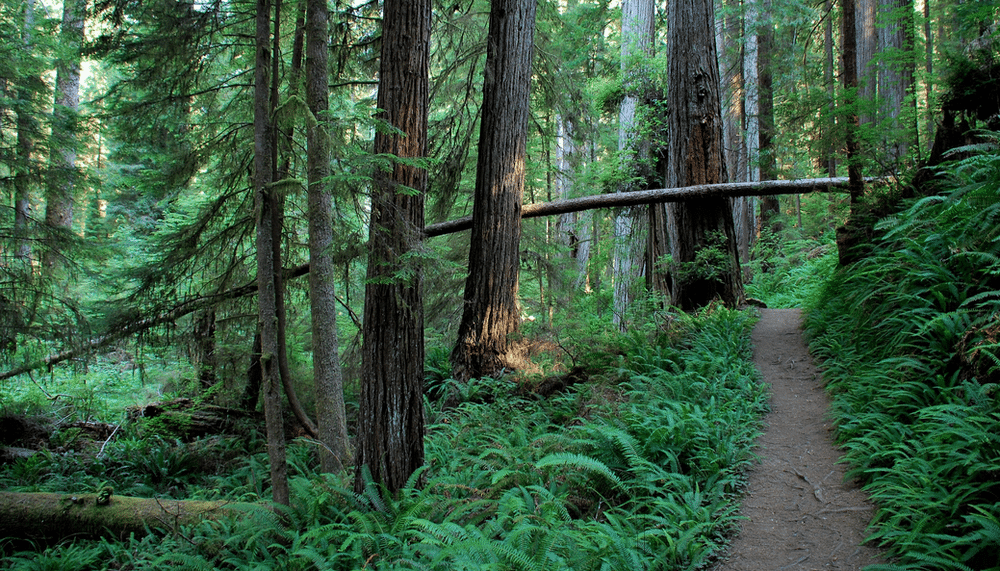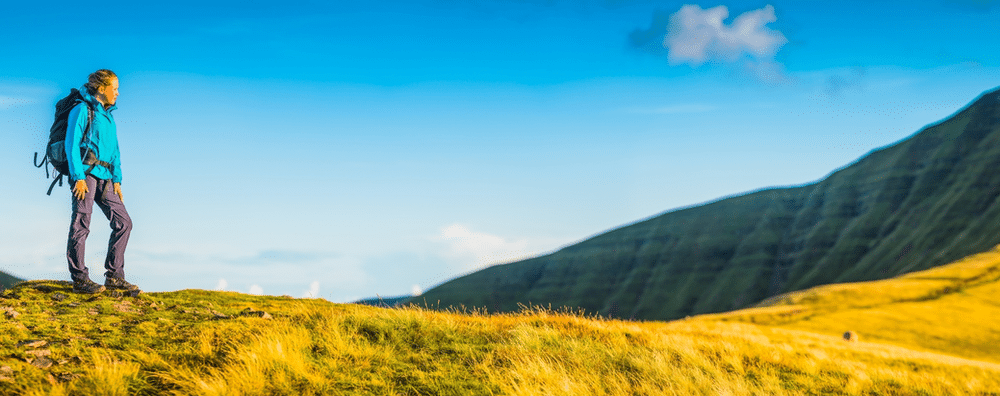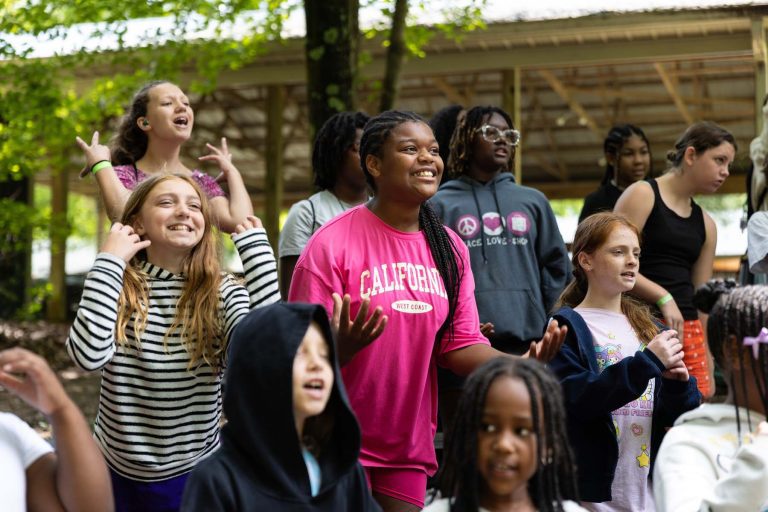When an organization is scrutinized after a major incident, imperfections can be magnified—with far-reaching repercussions

[This article originally appeared on OutdoorEd.com: The Premiere Community for Outdoor Education Professionals. ]
For Youth that Fit In Best Outside the Classroom, a Wilderness Adventure
It was the last full day of their 10-day wilderness backpacking expedition, and the 27 teenagers from an experiential high school had set up their final camp. The students had been traveling through a 375 square mile wilderness renowned for ancient forests, inviting hot springs and sparkling trout streams. They hiked in three separate small groups, and today and tomorrow—the last two days of the trek—they would be traveling without their adult trip leaders. This “patrol solo” was their opportunity to demonstrate their wilderness savvy and team skills. Tomorrow they would hike out of the wilderness and reunite with their trip leaders waiting at a basecamp in a developed drive-in campground. From there, tired, dirty, and triumphant, they would head back to the city, with its fast food and all the comforts of home.
After eight days of travel together, their six trip leaders had left them for a final two days and one night of unaccompanied travel. The adult leaders determined that the camping skills the teens had been learning and practicing were sufficient to permit this group solo experience. The students’ ability to work safety and effectively as a team seemed well-demonstrated.
The alternative high school, which catered to students who didn’t do well in traditional academic settings, had been running these wilderness trips for close to 30 years. The school focused on outdoor, experiential adventures and group challenges, to help its at-risk population build life skills and a path towards a productive, successful life. Students participated in a ropes course experience, rock climbing, and backpacking trips. They studied outdoor skills in the classroom, which they would use later during their wilderness experience.
This 10-day expedition was a high point of the year. And the two days of unaccompanied travel, billed as a kind of “rite of passage,” was the culmination of their wilderness adventure. Here they would show to others—and themselves—their leadership, responsibility, and team skills. Successfully completing this challenge would be a memorable achievement, and could boost their confidence in tackling other challenges in life.
The trip, up to that point, had been going well. But things were about to change.

At 9:16 the following morning, the area’s emergency dispatch center began receiving several calls from the campground. Students from the wilderness expedition were calling to report a terrible incident. As they relayed to the emergency services dispatcher, and later to law enforcement officers sent to the scene, a tragic sequence of events occurred.
Here’s what the first responders and later investigators learned.
Around six the previous evening, as the students were just starting to eat dinner at their final campsites that moonless night, two young men, strangers, walked into the campsite of one of the three travel groups. (Against the rules, students from one of the other patrols had already joined this group at their campsite.) The men carried a sword, a long knife, and two large bottles of Jack Daniel’s whiskey. They told the teens they were training to be Marines. “Let’s party!” they said. They offered to share their alcohol. The students from the two groups—some of whom had already been consuming alcohol and marijuana—accepted, and several became very intoxicated. One student, very drunk, began vomiting, reported trouble breathing, and experienced convulsions.
Things got worse from there.

The two young men, lubricated with their Jack Daniel’s, began brandishing their weapons, slashing them through the air, and bragging about being serial killers. A couple students, anxious about their safety, left to get help from fellow students in another group camped nearby. When the frightened students returned with reinforcements, one of the strangers, now seriously drunk, took off his shirt and challenged the students to a fight, saying, “If you want to kill me, I will f*** you all up so bad.” The strangers threatened to break the students’ hands and legs and gouge their eyes out. One of the drunken men began shoving the school kids; in the process, a female student was injured. Another student hid in the bushes. One of the men reportedly threw students’ flashlights into the bushes, resulting in some students resorting to using cigarette lighters to see the trail. Students, reportedly drunk, were going off into the woods and getting separated from the main group; others went off searching for them. From the darkness, students heard other students screaming. A student, drunk, hit one of the men in the head with a rock then ran off into the darkness, after he pinched her buttocks. The men destroyed the campsite and some of the students’ property, pulling up their canvas shelter and throwing things around the camp.
A small group of students left to get help from adults at the basecamp campground about three miles away. On the way they passed one of their fellow students, drunk and lying in his own vomit. The teens arrived at the basecamp campground around 2:00 am. They knocked on the door of a camper, but were turned away. They could not find a telephone. (They were not carrying satellite or cell phones of their own; the area did not have cell coverage.) They blew their emergency whistles, but no one responded. They couldn’t find the campsite where their trip leaders were sleeping, somewhere in the campground. Unsuccessful in their attempt to get help, they returned to their wilderness campsite around 4:00 am.
That morning, around 9:00 am, most of students—some were still unaccounted for—began straggling out of the wilderness. Some abandoned their backpacks on the side of the trail as they walked. One student assisted another, who was vomiting and having trouble walking due to acute alcohol poisoning from the night of drinking. As they hiked along a road from their wilderness campsite towards the drive-in campground where the trip leaders were waiting, the students approached a ravine, and noticed a backpack along the road. A few feet away lay a sword, the same sword from the now-vanished men. In the river at the bottom of the ravine, 67 feet below, lay the bodies of two of their fellow students. One body was partially on top of the other, and both of their heads were in the water.
One of the students, clad in blue pants and a blue fleece sweatshirt, had two cocoa packets and a Jolly Rancher candy still in his pocket. The coroner’s report later showed both students were under the influence of alcohol and marijuana at the time they plunged to their deaths.

A Terrible Loss for Family and Community
That two beloved 17 year old boys on an outdoor adventure designed to foster character and self-confidence should lose their lives is a devastating tragedy affecting not just them, but their family members, loved ones, and members of the community. The profound grief experienced by their parents is something no person should ever have to bear.
A Loss for the Wilderness Program, Too
For managers of outdoor and wilderness programs, who have worked hard and sacrificed to create and sustain these outdoor education adventures, designed as powerful instruments of personal growth, a loss like this can hit hard too. Regret, shame, and doubt—could we have prevented this by doing things differently?—can persist for years.
One aspect of the aftermath that outdoor program managers may not anticipate, however, is the level of scrutiny and adversarial attention that can follow a tragic incident.
As they grapple with their own loss—which in no way compares, to be clear, with the loss felt by a bereaved parent—managers of outdoor-based organizations can face a tsunami of lawyers and others who will, rightly or wrongly, attempt to make them look as incompetent, irresponsible and negligent as they can.
This often unanticipated onslaught can lead to significant and negative impacts for managers and the organizations they lead.
Sometimes these attacks are justified. Other times, they are not. If negligence—especially gross negligence—is involved, it should be brought to light, and heavy criticism may be well-deserved. In other cases, claims may not be well-founded. Or a grab for the largest possible insurance settlement, regardless of who’s actually at fault, seems to be the primary end. In cases like these, parts of the critique can feel unfair.
In either case, it’s best for leaders of wilderness-based and outdoor programs to be prepared well in advance.
When a Major Incident Occurs
When an outdoor adventure or wilderness program experiences a fatality or other major incident, investigations follow. A quality organization will generally conduct its own internal investigation, and may commission an external team of reviewers to look into the incident and provide a report on findings and recommendations. Law enforcement or other government or regulatory bodies may look in-depth at the organization as well. Criminal or civil charges may bring even deeper examination.
This probing can uncover issues beyond the original incident. As an analogy, consider being pulled over for a broken taillight. Along with being stopped for this minor infraction, the driver may be asked to prove possession of a driver’s license and current vehicle registration. They may be investigated for possible intoxication. The vehicle may be searched for illicit items. One error can lead to an inquiry that may find other, unrelated, issues, and bring additional penalties.
As a contemporary example, consider the case of Paul Manafort, former campaign chairman for the Trump presidential campaign. Mr. Manafort was investigated by the U.S. Department of Justice’s Special Counsel Robert Mueller as part of an investigation into Russian interference in the 2016 U.S. elections. He ended up being convicted on unrelated charges including tax and bank fraud, and conspiracy to defraud the United States.
As investigations dig ever deeper, your skeletons—or in Manafort’s case, $15,000 ostrich-skin jackets—will be brought out of the closet and paraded in front of the world.
Some investigators (for example, law enforcement officers) may seek to impartially uncover relevant facts. Others—such as plaintiff’s attorneys—may seek to make the organization look as bad as possible. They will aggressively highlight perceived shortcomings, no matter how small, and diminish the safeguards and strengths of the organization’s risk management systems. Their intent is not to be balanced and fair. Their intent is to win, and for you to lose.
Outdoor program managers should expect these adversarial examiners to leave no stone unturned in their quest to find any deficiency, no matter how slight. Any cut corners may have the spotlight shown on them and be made to look as bad as possible. Anticipate that no perceived problem or shortcoming, no matter how tiny or explainable, will go uncriticized and unamplified to the greatest degree possible. It is by this approach that antagonists may convince others of the organization’s wrongdoing, and win the greatest settlement.
As these investigations dig up and amplify any and all transgressions, in the case of an adversarial (as opposed to impartial) investigator, the organization risks taking on a negative appearance of outsized proportions. Even if the organization is one that manages outdoor risks appropriately, customers can disappear. People may lose their jobs. And the outdoor program may be curtailed or shut down completely.
What Happened to the Teen Wilderness Program
For the wilderness education program where the tragic double fatality occurred, the effects were profound. The experiential-based school, serving fewer than 200 pupils, was part of a regional educational enterprise serving 60,000 students. Outdoor trips were indefinitely suspended for all of them. The school—without wilderness expeditions—was permitted to continue immediately after the incident, though it was shut down by authorities shortly thereafter, following financial concerns.
Issues Uncovered During the Investigations
(Full disclosure: the author, a staff member of outdoor program consultancy Viristar, served as expert witness in a legal proceeding involving this incident, providing expert opinion on safety standards in wilderness-based outdoor programs.)
In the inquiries that followed the deaths by falling on the wilderness backpack trip, the organization was criticized for multiple issues:
- Program leadership failed to search for drugs or alcohol in the packs or on the persons of the students, despite knowing students in the program had a reputation for being likely to use drugs and alcohol and that students had taken and used marijuana on similar previous wilderness expeditions.
- The parent of a student told the organization’s leadership she had not signed a permission slip for her child to participate in the wilderness trip. Although the program had a permission slip with her name on it (suspected to be forged by the parent’s child), the organization did not provide her with another permission slip to sign.
- Trip leaders did not have appropriate training in youth leadership. They did not have appropriate emergency medical certification such as Wilderness First Responder. (Trip leaders were responsible to be trained in ‘Standard First Aid,’ considered inadequate for a wilderness expedition.)
- Two of the returning trip leaders had, during a previous wilderness expedition, left students in the wilderness unaccompanied by any adults before the appointed time for the students to be left on their own. Despite this, those trip leaders were brought back for this trip.
- The organization did not show participants where trip leaders would be camping when students were engaged in independent travel—where students were to send runners to in case of emergency. Staff only pointed in the general direction from about 300 yards away. (During the emergency, students were unable to find the adults at the campsite and seek their assistance.)
- Participants and their parents were told that during the last night on the trail, when students were unaccompanied, staff would be at the basecamp at the end of the hiking route. However, that night staff drove from the campsite into town for a restaurant meal and shopping. This had been routinely done on the final night of previous wilderness expeditions. Staff returned to the basecamp where each drank multiple beers, which impaired their ability to safely respond to an emergency.
- Students were required to bring a small flashlight with extra bulbs and batteries, but the organization never checked whether each student had the required equipment.
- The program’s safety manual stated “…trips are always under the supervision of at least one teacher,” but this is hard to rectify with a situation in which the single certificated teacher of the six trip leaders is about three miles away from the student groups on their final unaccompanied travel. The issue is compounded when all the field staff, unbeknownst to students, have driven into a nearby town for a restaurant dinner while students remain in the wilderness.
- The wilderness trip requirements stated that each group was to be checked daily, but this didn’t occur, especially as most of the staff departed the wilderness early.
- The safety checklist specified that for accidents resulting in serious injury, instructions were to pack out to an emergency vehicle. However, the location of the vehicle was never made clear to students, and might not be available at all when staff all drove into town.
- No criminal history checks of trip leaders were made.
- The organization’s staff instruction materials contained out-of-date or inaccurate information. This included the suggestion that pitons should be carried in class 4 terrain, recommending a rappel tie-in option as bowline on a coil, and implying that spring water is potable without disinfection treatment.
- During the trip a female student complained of one or more male students engaging in inappropriate sexual behavior when students were supposed to be sleeping. She stated she felt uncomfortable with the male students and the requirement to sleep in a mixed-gender group. Organizational leadership, however, continued to require that male and female students sleep together.
- The program’s management knew students had a history of alcohol and marijuana use. They were informed by one student that other students were using alcohol and marijuana on the trip. Staff did not search students’ packs or persons, however, and students brought and consumed rum, vodka and marijuana on the trip.
- Four of the six trip leaders hiked out the night before unaccompanied travel was supposed to start, rather than that following morning. This left students without adults for two nights, rather than the single night that was planned.
Investigations Will Look Back in History to Find Other Problems
A searching inventory of all the shortcomings surrounding the incident is not the only review that may occur. Events that happened years ago, considered closed issues, can be raised again to reinforce a narrative of poor performance.
Thousands of pages of documentation, including timelines, maps, photos, narratives, and multiple audio-taped interviews of persons involved were produced during the inquiries into the wilderness backpacking fatality. In addition to looking at the incident, investigating authorities reached back years into the past to identify and bring forward perceived deficiencies.
Authorities charged that for years, and not just the current expedition, trip leaders did not have appropriate training in youth leadership and emergency medical certification such as Wilderness First Responder. They also charged that for years, trip leaders had failed to search students and their packs for drugs and alcohol, despite knowing that students had a reputation for using them and had brought them on similar trips previously.
The recital of charges brought from the past also included:
- Two years prior, a student received an electrical shock while retrieving a rope ladder from a power line. The staff member present was not familiar with the necessary safety procedures for the situation;
- Four years previously, seven students went missing and were two days overdue from a wilderness backpacking trip;
- Six years before the fatalities, students got into a knife fight with students from another high school, necessitating intervention by federal rangers; and
- Nine years before, students and staff were caught in a blizzard without appropriate clothing or equipment, and had to be rescued by federal rangers.

Implications for Wilderness and Outdoor Programs
What does this all mean for the executive leadership of wilderness and outdoor programs?
First, remember that it’s important to manage risk in the wilderness because it is simply the right thing to do for participants, staff, and the community. It’s not an appropriate approach to see wilderness program risk management principally as a means by which to protect one’s outdoor business. Instead, it’s a way to help ensure that program participants have the excellent outcomes that both providers and participants want to occur.
Keep in mind, however, that if there is an incident, the organization and its staff can fall under extraordinarily intense scrutiny. In some situations, investigators have an incentive to make the organization and its staff look as bad as possible. In these cases, small omissions or errors can be amplified by creative and articulate critics, which can lead to major negative consequences for the organization.
And so a lesson for any outdoor program is to have a high-quality and comprehensive wilderness risk management system.
What does managing risk in the wilderness or outdoor environment look like? It involves building and sustaining a comprehensive safety infrastructure that demonstrably meets industry standards.
Risk management systems are most robust when they address, among other things, the elimination, reduction and transfer of risks associated with staffing, activities, corporate culture, activity locations, equipment, participants, and transportation. This should be done to bring risks to a socially acceptable level in line with current industry standards.
Understanding how to establish those systems, and the ever-evolving and sometimes unwritten standards to which they should perform, can mean a significant investment of resources. Once an organization has established those systems, some wilderness and outdoor programs find it useful to bring in an objective outside specialist to help ensure their risk management infrastructure meets or exceeds current standards. Viristar and other consultancies provide such risk management review services, which can complement periodic internal safety reviews conducted by the organization itself.

Documentation
The Need for Documentary Evidence
“If you didn’t write it down, it didn’t happen.” This adage is essential to remember in preventing and responding to safety incidents in the wilderness.
It’s not enough for an organization to have an industry-standard wilderness risk management system in place and fully operational. The organization has to be able to prove that it has such a system.
In the case of the double fatality during the backpacking trip, the organization was unable to produce documentation showing a robust safety program. It could not produce current copies of first aid certifications of trip leaders. It could not show written evidence that staff had gone through comprehensive wilderness safety trainings. This lack of documentation did not help make the case that the organization was thoughtful and diligent and took risk management seriously. It did not help make the case that the school should be allowed to continue to run wilderness programs.
Resist the Urge to see Documentation as Low Priority
It’s deceptively easy to think of major incidents, “This will never happen to me.” Indeed, many outdoor programs run for decades without experiencing participant fatalities or permanently disabling illness or injury. From an evolutionary biology standpoint, our brains are programmed to seek instant gratification. They are not predisposed to take on tasks whose payoffs may be years or generations away. (This helps explain, in part, our social reluctance to address issues such as global climate change.)
Organizational managers are often drawn to focus on the needs of the moment: preparing for that upcoming staff training, making last-minute gear purchases, hiring that last staff person, pursuing that compelling marketing opportunity. Systematically developing a corporate culture and a policy regime that minimizes the probability of extremely rare but highly severe incidents like loss of life can keep getting pushed back to another time. But good risk management means we must fight this urge to solely address the urgent issues in front of our nose, and think strategically about long-term approaches to best serving participants and protecting the organization.
To help us keep strategic risk management a priority, it’s helpful to keep in mind that in the event of a serious safety incident, one can expect this: very highly trained people, who are smart and very good at what they do, will attempt to destroy the organization and the reputation of its leaders. Expect that attorneys and others on the opposing side will attempt to discredit staff, discredit the organization, and paint the program in the worst light possible. They have been training their whole career to be able to do this. And they can be devastatingly effective.
Their effort will not be to even-handedly present the facts of the situation. Their aim will be to present a compelling, one-sided perspective to a judge, a jury, the public, or authorities that their position is more credible than that of the organization’s and its defenders.
But by being able to produce documentary evidence of a high quality risk management system, wilderness program managers can minimize the probability of permanent harm not just to their participants, but to their staff, the broader community, and the continued existence of the organization itself.
What Should Be Documented?
Document anything that could possibly be relevant to addressing the hazards and risks of your program. Your chances of providing participants with high-quality outdoor experiences, and protecting your organization in case of serious incident, are improved when you can demonstrate through documentary evidence your appropriate management of risk.
This may include, but is not limited to, evidence showing:
- Comprehensive written standards for staff qualifications exist, and staff have demonstrably met those standards.
- Requirements for skills training, activity area knowledge, medical and rescue training, and population-specific training are demonstrably met, evidenced, for example, by current certifications or check-offs kept on file.
- Content for mandatory staff training is on file. Evidence staff have successfully completed these required trainings—such as sign-in logs, certificates, and results of written or practical tests—are on file.
- Records of equipment purchase, maintenance, repair and retirement, according to relevant manufacturer recommendations and industry standards, are on file.
- Standards for subcontracting and transportation risk management are established, and evidence recording adherence to those standards is kept.
- Incident reports and incident narratives are complete and on file.
- Medical documents—such as SOAP notes (medical incident report forms), medical logs, and medication administration logs—are complete and retained.
- Incident investigation reports and risk management review reports, and written evidence of systematic follow-up to their findings, are on file.
Special circumstances—such as working with specialized populations, activities, program areas, and geographies/jurisdictions—may indicate the need for substantial additional documentation.
The Delayed Rewards of Documentation
Active, kinesthetic outdoor and experiential educators may not delight in a world of extensive paperwork. It can be helpful, then, to ensure that staff clearly understand and appreciate the connection between the investment in risk management, and maximizing the opportunity for the organization to sustainably provide fun, powerful, and growthful outdoor experiences to all.
Positive outdoor experiences have tremendous potential for creating extraordinary personal growth, exhilarating adventures, and positive memories that last a lifetime. Far better to invest in the work to make that happen, than to experience the anguish and loss that comes with a major incident.
When an organization can produce evidence of a robust and standards-compliant risk management structure, it minimizes the likelihood of incidents occurring in the first place. And it minimizes the impacts if incidents occur. In the aftermath of a significant safety incident, it’s less probable that the outdoor program will appear inadequate and face a loss of business or complete closure. Instead, the end result is more likely to be a belief that the organization did everything reasonable to prevent the accident, but there are inherent risks in the outdoors. And so while this is an unfortunate incident, it does not reflect poorly on the organization.

Conclusion
Well-run wilderness programs rarely experience serious illness, injury, or other major loss. The overwhelming majority of participants find their lives enriched by successfully overcoming group outdoor challenges, building close interpersonal relationships, and experiencing the tranquility and beauty of nature.
A robust and standards-compliant risk management system helps ensure that this stays the case. This is the primary purpose of understanding and managing outdoor program risks.
In the rare case of a serious incident, expect to be thoroughly investigated. When the examination shows compelling evidence of excellence in risk management, a likely result is that the organization and its staff will be able to continue to provide engaging and fulfilling outdoor experiences for many years to come.



